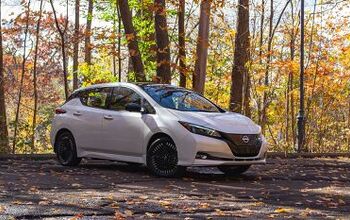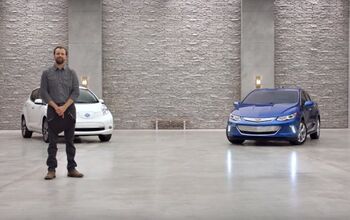Nissan Turns Over A Totally New Leaf

Nissan has officially revealed the production version of the all-new, third-generation Leaf, confirming the EV's transformation from hatchback to crossover. Set to launch later this year, the redesigned Leaf marks a significant departure from the original compact hatchback layout that helped make the Leaf popular as one of the first mass-market electric vehicles when it debuted fifteen years ago.
Key Points
- Nissan Leaf returns as a subcompact SUV with aerodynamic styling and a confirmed U.S. launch within the next 12 months.
- Now features Tesla's NACS charging plug and aims for improved efficiency with a 0.26 drag coefficient—but no official range, power, or price details yet.
- Nissan hopes the redesigned Leaf will revitalize its EV lineup, but success remains uncertain amid a tough EV market and the brand’s ongoing financial struggles.
Unveiled in near-production form at Nissan’s “Full Speed Ahead” event in Atsugi, Japan, the new Leaf adopts a more modern SUV profile while retaining aerodynamic focus. With a drag coefficient of 0.26, it's slipperier than the Chevy Equinox EV, though it falls short of the Tesla Model Y’s 0.23 benchmark.
Built on the Renault-Nissan-Mitsubishi Alliance’s CMF-EV platform—the same architecture underpinning the Nissan Ariya—the new Leaf will also share its underpinnings with the upcoming electric Juke. While the new Leaf is slightly shorter than the outgoing model, it sits higher off the ground and adopts a more imposing crossover-style stance. Its design draws heavily from the larger Ariya.
Nissan confirmed the vehicle will feature the North American Charging Standard (NACS) plug, making it compatible with Tesla's Supercharger network—a key upgrade over the outgoing model’s CHAdeMO port. A dimmable panoramic sunroof and 19-inch alloy wheels were also confirmed, along with a revamped interior sporting a push-button shifter and updated digital displays.
Aside from design, none of the important information was disclosed—battery specs, range estimates, power figures, and pricing all remain a mystery until later this year. Although Nissan did say the U.S. and Canada will be the first markets to launch the new Leaf.
Inside, the Leaf should feature Nissan’s latest infotainment and driver assistance technologies. Built on the brand’s updated Car and Connected Service (CCS) platform, the cabin will offer a Google-based interface and the newest version of Nissan’s advanced driver-assist features.
The original Leaf launched in 2010 as one of the first affordable, mass-market electric vehicles, but over time, it lost relevance due to outdated technology and limited updates. The company’s only other U.S. EV, the Ariya, has underperformed in the marketplace.
Become an AutoGuide insider. Get the latest from the automotive world first by subscribing to our newsletter here.

An experienced automotive storyteller and accomplished photographer known for engaging and insightful content. Michael also brings a wealth of technical knowledge—he was part of the Ford GT program at Multimatic, oversaw a fleet of Audi TCR race cars, ziptied Lamborghini Super Trofeo cars back together, been over the wall during the Rolex 24, and worked in the intense world of IndyCar.
More by Michael Accardi




































Comments
Join the conversation
Love my 'low tech Leaf. The problem with most EVs is over Tech. e.g. the Aria a total "Tech for Tech" bomb of a failure!
P.S. Imagine the false value of a button that is not a button but lets you feel like you pressed a button... i.e. the "haptic buttons on the Aria"
Yikes, No wonder it bombed!